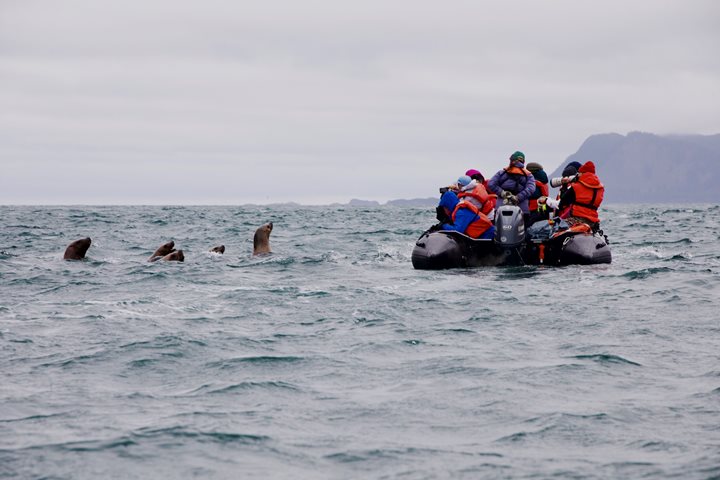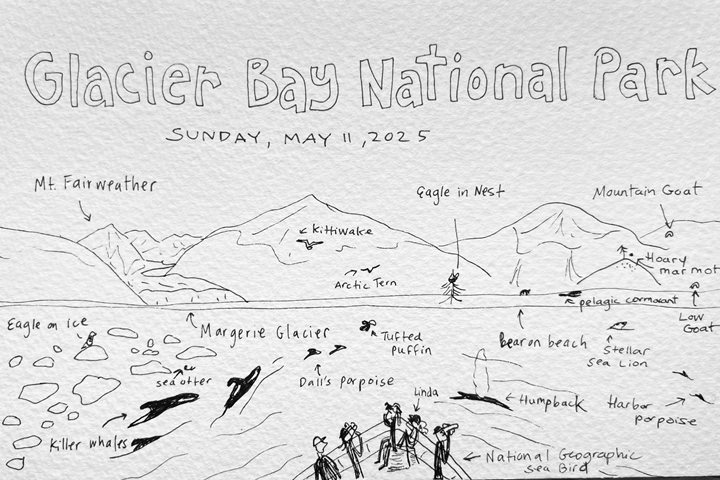As the sun rose the National Geographic Sea Lion arrived at SGang Gwaay, the most southern ancient village site of the Haida Nation. It is a sacred site, a place many, many people travel from all over the world to visit...to be in the presence of totem poles in situ.
It was proposed by the federal government of Canada through its representative, Peter Bernett to the World Heritage Site List of UNESCO on behalf of the Province of British Columbia that this site be listed by Unesco. On November 27, 1981 Ninstints (non-native name) was declared “a World Heritage Site, of importance to the History of Mankind.” The traditional Haida name, known for generations, as SGang Gwaay was proposed strongly by the Haida people and by 2010 the Haida name SGang Gwaay was changed in support of the Haida Nation. What remains in the present day site are mortuary poles a memorial poles and remnants of traditional Haida houses. Were they left out of respect? Were they left because they are protected? Were they left as a reminder of the large village that once called this small island and harbor home? Probably, all of the above! We were fortunate today to be at anchor in this lovely place sitting at the southern tip of the Haida Gwaii archipelago ready to see SGang Gwaay, hear the stories from Haida Watchman and pause in reflection about the ever changing Northwest Coast and the living culture of the Northwest Coast indigenous peoples.







